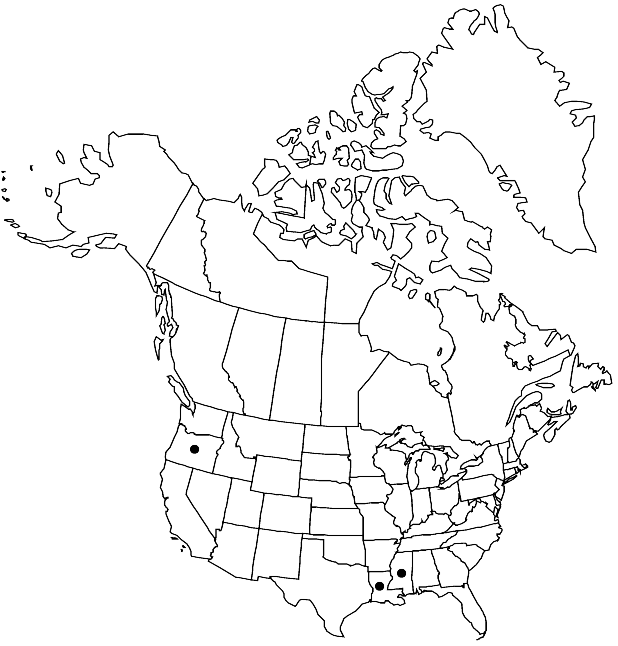Rorippa dubia
J. Jap. Bot. 30: 196. 1955.
Annuals; usually glabrous, rarely sparsely pubescent. Stems (simple or branched from base), erect or ascending, branched proximally and distally, (0.4–) 1.5–3.3 (–4.5) dm, (glabrous or sparsely pubescent proximally). Basal leaves not rosulate; blade margins pinnatifid. Cauline leaves petiolate (to 4 cm) or (distal) sessile; blade lyrate-pinnatipartite or undivided, obovate, oblong, or lanceolate, (2–) 3–11 (–15) cm × (5–) 10–30 (–50) mm, (lateral lobes smaller than terminal), base auriculate or not, margins entire, irregularly crenate, or serrate (entire or serrulate distally). Racemes elongated. Fruiting pedicels divaricate, straight, (2–) 3–8 (–10) mm. Flowers: sepals erect, oblong-linear, (2–) 2.5–3 × 0.5–0.7 mm; petals (usually absent), yellow, linear or narrowly oblanceolate, 1–1.5 × 0.2–0.7 mm, (shorter than sepals); median filaments 1.5–2.8 mm; anthers oblong, 0.5–0.8 mm. Fruits siliques, straight, linear, (15–) 25–40 × 0.7–0.9 (–1) mm; ovules 70–90 per ovary; style 0.2–1 (–1.5) mm, (stout, as thick as fruit). Seeds uniseriate, reddish-brown, ovate-orbicular, 0.5–0.8 mm (0.4–0.6 mm diam.), foveolate. 2n = 32, 48.
Phenology: Flowering often year-round.
Habitat: Waste areas, slopes, roadsides, wet grounds, grassy places, field margins
Elevation: 0-500[-3700] m
Distribution

Introduced; La., Miss., Oreg., se Asia, also in Central America, South America
Discussion
Rorippa dubia was treated by R. L. Stuckey (1972) as R. heterophylla and by R. C. Rollins (1993) as R. indica var. apetala. Both authors overlooked H. Hara’s (1955b) comprehensive account of its typification and that of R. indica.
Selected References
None.
Lower Taxa
"elongated" is not a number."thick" is not a number."dm" is not declared as a valid unit of measurement for this property."dm" is not declared as a valid unit of measurement for this property.